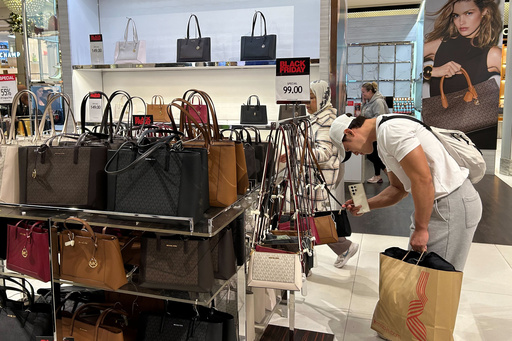This year’s holiday shopping season saw an increase in sales, despite consumers facing higher prices on many essential goods, according to newly released data.
From early November up until Christmas Eve, holiday sales surged by 3.8%, exceeding last year’s 3.1% rise, as reported by Mastercard SpendingPulse, which compiles payment data across various methods, including cash and debit cards. Notably, 10% of total spending occurred during the final five days of the shopping season.
With five fewer days between Thanksgiving and Christmas this year, retailers were under greater pressure to motivate shoppers to purchase their gifts early and in larger quantities.
Michelle Meyer, the chief economist at Mastercard Economics Institute, remarked that the season showcased a consumer base eager to spend, but also one that is very much focused on finding value, evident in a spike of online purchases during significant promotional events.
The observed rise in sales outperformed the initially projected growth of 3.2% by Mastercard SpendingPulse for this fall. It is important to note that this data excludes the automotive sector and has not been adjusted for inflation.
Sales in clothing saw an increase of 3.6%, largely driven by online shopping. Additionally, spending at restaurants and sales within the electronics and jewelry categories also showed positive trends. Online purchases experienced a notable jump of 6.7% compared to the previous year, while physical retail sales rose by 2.9%.
Consumer spending is a critical component of the U.S. economy, representing nearly 70% of its overall activity, prompting economists to pay close attention to Americans’ spending habits during the holiday season as a barometer of their financial well-being.
The latest government data on consumer spending revealed that retail activity intensified last month. However, a significant portion of the sales boost was attributed to auto dealers, likely driven by heightened demand in regions affected by Hurricane Helene. Attractive discounts across various retail chains also contributed to increasing shopper turnout.
Despite this uptick, there were signs of consumer caution; sales in grocery stores, clothing retailers, and restaurants saw declines. Excluding automobile dealers and online businesses, the recorded sales growth was relatively modest.
With the shorter holiday shopping timeline and the distraction of a presidential election, retailers felt a heightened sense of urgency this year. In fact, sales of general goods plummeted by 9% in the two weeks ending November 9, as noted by Circana, a market research company. Although sales have been recovering since then, retailers must work to recover losses from earlier in the season.
Next month will bring a clearer picture of consumer spending as the National Retail Federation, the largest retail trade association in the U.S., is poised to release its combined sales figures for November and December. The organization anticipates shoppers will have spent between $979.5 billion to $989 billion during these months, reflecting a 2.5% to 3.5% increase compared to the same timeframe last year. This projected growth rate is slower than the 3.9% increase seen from the 2023 to 2022 holiday seasons.
In summary, despite the numerous discounts available from October onward, retailers experienced a solid beginning to the unofficial holiday shopping rush.



